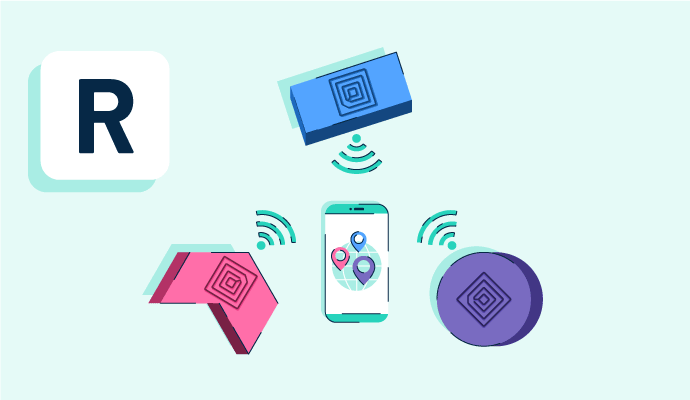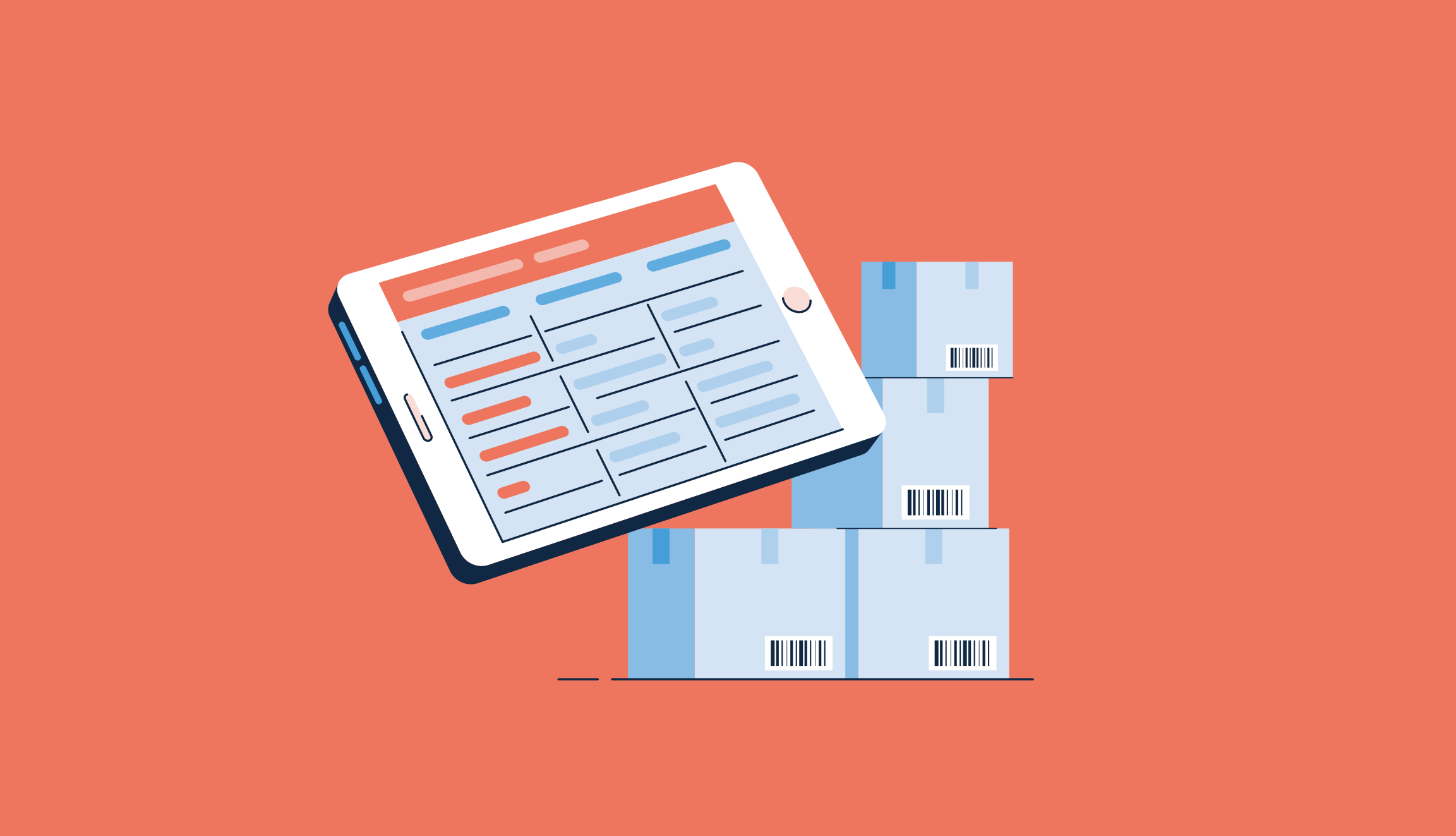What is RFID?
Radio frequency identification (RFID) is a type of wireless communication that tracks objects using high-frequency radio waves. It helps organizations improve efficiency, cut costs, increase security, and enhance operations.
A tag, reader, and antenna are its major components. An RFID reader detects a radio signal when an RFID tag enters the reader's range. Once it establishes the connection, the stored data is retrieved from the tag.
Businesses use inventory control software with RFID features to manage inventory, predict demand, and optimize orders with current product inventory.
Types of RFID
RFIDs can be either active or passive. Active RFID tags are attached to a power supply that emits signals. An antenna receives the signals. Passive RFID tags use power from a reader. Below are some notable RFID types.
- Ultra-high frequency RFID ranges from 300 megahertz (MHz) to 960 MHz. It’s possible to detect the frequency from almost 25 feet away. They’re commonly used on shipping pallets and driver's licenses.
- High-frequency RFID has a frequency between 3 MHz to 30 MHz. The transmission range is from a few inches to several feet. These are found in passports, credit cards, books, and non-contact payment systems.
- Low-frequency RFID’s frequency is between 30 kilohertz (KHz) to 500 KHz. They have short transmission ranges between a few inches to under six feet. They’re used for animal tracking.
- Microwave RFID systems run at 2.45 gigahertz (GHz). Users can read them from more than 30 feet away.
RFID benefits
Though created for supply chain management, RFID helps a lot in operations such as tagging and sorting. Since they’re linked to electronic systems, an alarm is triggered if someone moves the product without authorization. There are various other advantages, such as:
- Speed and convenience. RFID provides an easy, efficient, and quick way of identifying and tracking objects.
- Wider range. Unlike a barcode printer, the tag in an RFID doesn’t need to be in the line of sight of a reader. The radio waves have a more extended range, and the electromagnetic radiation spreads in various directions.
- Simultaneous scanning. An RFID system can scan multiple items at a time, unlike the barcoding system. Because of this, employees can scan items in a box or on the shelves without moving them out of their position.
- Data security. Tags containing data are more secure than barcodes since they’re not visible in plain sight. Reading these tags requires specialized equipment, amplifying security.
- Versatility. RFID makes it easier to embed tags on various objects and items such as plastic cards, vehicles, and locks.
How RFID works
Below are the basic steps to using RFID to track inventory and automate the checkout process in a retail store.
- RFID tag preparation and placement. Each product in the store has an RFID tag, which is usually a sticker or a label. Every tag has a unique identification number for the respective products. Inventory teams place the tags on respective products, either on the labels or packaging.
- RFID reader activation. RFID readers are installed at various locations of the store. For example, entry or exit points and checkout counters. The readers emit radio waves into their surroundings.
- Tag activation and powering. When a product with a tag enters the range of RFID readers, tag activation occurs. Here, the reader’s radio waves energize the tag’s antenna giving power to the microchip.
- Tag response. After activation, the tag responds to the reader and transmits a unique, read-only identifier (UID) stored on the microchip. The response happens through radio signals.
- Data capturing. RFID gets the tag’s response, including UID and other relevant information. The antenna converts the radio signal emitted by the tag into digital data.
- Data processing and integration. The reader passes captured data to a backend system, usually integrated with inventory management software. It updates the inventory.
Applications of RFID
Several industries worldwide use RFID due to the lower hardware costs and other notable applications. Some of the use cases of RFID are as follows:
- Supply chain tracking uses RFID to enhance real-time visibility and traceability of products throughout the process.
- Asset tracking allows organizations to monitor and manage valuable assets efficiently. Tags attached to assets make real-time identification and location tracking possible.
- Retail and point-of-sale (POS) use RFID to improve overall inventory management and refine operations.
- Access control and security systems rely on RFID for secure and efficient entry management. Tags only permit entry access to authorized individuals.
- Healthcare and patient management setups use RFID to enrich identification, tracking, and safety processes. RFID-enabled wristbands and cards help track patient information and medical history.
RFID vs. NFC
RFID uses magnetic waves to distinguish and track tags attached to objects. It identifies unique items using radio waves with the help of a tag, an antenna, and a reader.
Near-field communication (NFC) is a subset of RFID that facilitates communication between two devices within a specific range. NFC is a faster and more efficient way to process payments and deliver a better customer experience.
Learn more about inventory management to organize and plan inventories effectively.

Sagar Joshi
Sagar Joshi is a former content marketing specialist at G2 in India. He is an engineer with a keen interest in data analytics and cybersecurity. He writes about topics related to them. You can find him reading books, learning a new language, or playing pool in his free time.

